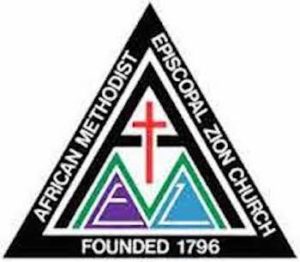
*On this date in 1796, we celebrate the African Methodist Episcopal Zion Church (AMEZ). The AME Zion Church is a historically black Christian denomination in the United States.
It was officially formed in 1821 in New York City but operated for several years before then. The African Methodist Episcopal Zion Church adheres to Wesleyan-Arminian theology. The origins of this church come from the John Street Methodist Church of New York City. Following overt discrimination in New York, many black Christians left to form their churches. The first church founded by the AME Zion Church was built in 1800 and was named Zion.
These early black churches still belonged to the Methodist Episcopal Church denomination, although the congregations were independent. During the Great Awakening, the Methodists and Baptists welcomed free blacks and enslaved people to their congregations and as preachers. The young Zion church grew, and soon, multiple churches developed from the original congregation. These churches were attended by black congregants but ministered to by white-ordained Methodist ministers. In 1820, six of these churches met to ordain James Varick as an elder, and in 1821, he was made the first General Superintendent of the AME Zion Church.
A debate raged within the white-dominated Methodist church over accepting black ministers. This debate ended on July 30, 1822, when Varick was ordained as the first bishop of the AME Zion church, a newly independent denomination. The total membership in 1866 was about 42,000. Two years later, it claimed 164,000 members as it sent missionaries to the South after the American Civil War to plant new churches with the newly emancipated freedmen. The A.M.E. Zion Church had been part of the Abolitionist movement. It became known as the 'Freedom Church' because it was associated with the period after the emancipation of the enslaved people.
An influential leader bishop was James Walker Hood. He created and fostered his network of AMEZ churches in North Carolina and was the grand master for the entire South of the Prince Hall Freemasonry. This secular black fraternal organization strengthened the political and economic forces inside the black community. The Wesleyan-Holiness movement in Methodism came to the African Methodist Episcopal Zion Church, with Julia A. J. Foote, among others, preaching the doctrine of entire sanctification throughout pulpits of the connexion. Foote was the first woman ordained as a deacon within the connexion in 1894 and "in 1899, was ordained—the second female elder in her denomination."
1924, Cameron Chesterfield Alleyne became the church's first resident bishop in Africa. Black churches were integral in helping build communities and develop leadership among the freedmen in the South. Later, they played an increasingly powerful role in the American Civil Rights movement of the mid-20th century. AMEZ remained smaller than the AME (African Methodist Episcopal Church, a denomination started in Philadelphia in the early 19th century) because some of its ministers lacked the authority to perform marriages, and many of its ministers avoided political roles. Its finances were weak, and generally, its leadership was not as strong as the AMEs.
However, it was the leader among all Protestant denominations in ordaining women and giving them powerful roles in the church. The current AME Zion church has more than 1.4 million members, with outreach activities worldwide. Greater Centennial AME Zion Church, located in Mount Vernon, New York, and Simon Temple AME Zion Church, located in Fayetteville, North Carolina, are two of the largest churches in the AME Zion Church, with both having more than 3,000 members. In 2016, a national Christian television network featured the AME Zion Church for a two-hour special. This was in response to the massive killings of African Americans led by Rev. Daren Jaime, Rev. Edwin Sutton, Rev. Brian R. Thompson, and Rev. Stephen Pogue.
The AME Zion Church continues to preach truth to power. In this generation, an individual member is sometimes called a "Zion Methodist ."The AME Zion church has been negotiating for many years to merge with the Christian Methodist Episcopal Church into a tentatively named Christian Methodist Episcopal Zion Church with over 2 million members. The plan was originally for unification by 2004. AME Zion church is very similar in doctrine and practice to the CME and African Methodist Episcopal churches.